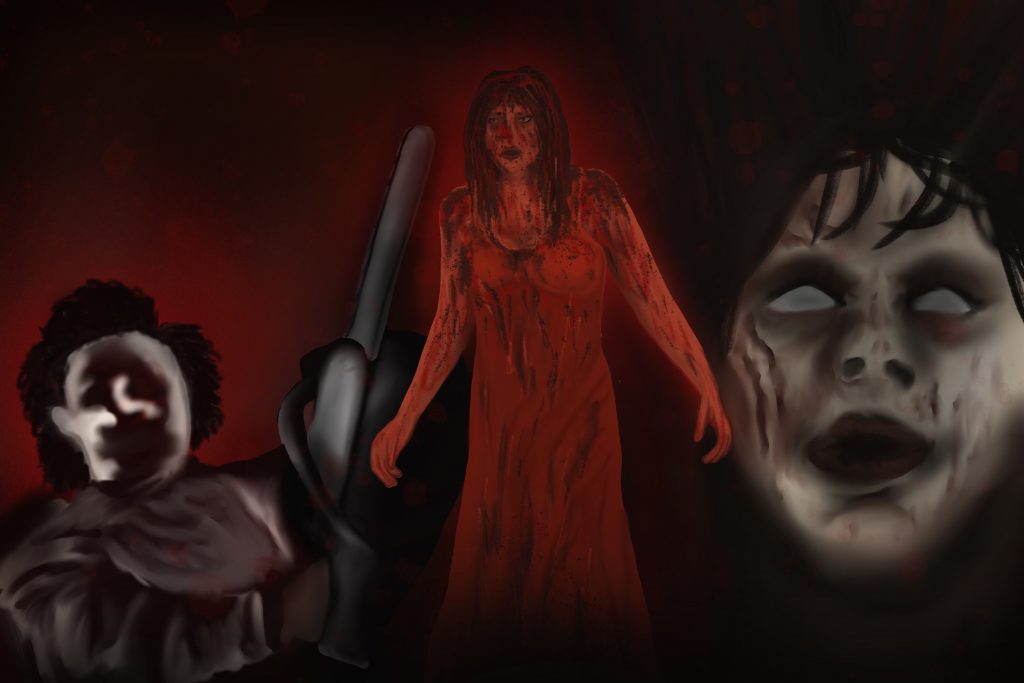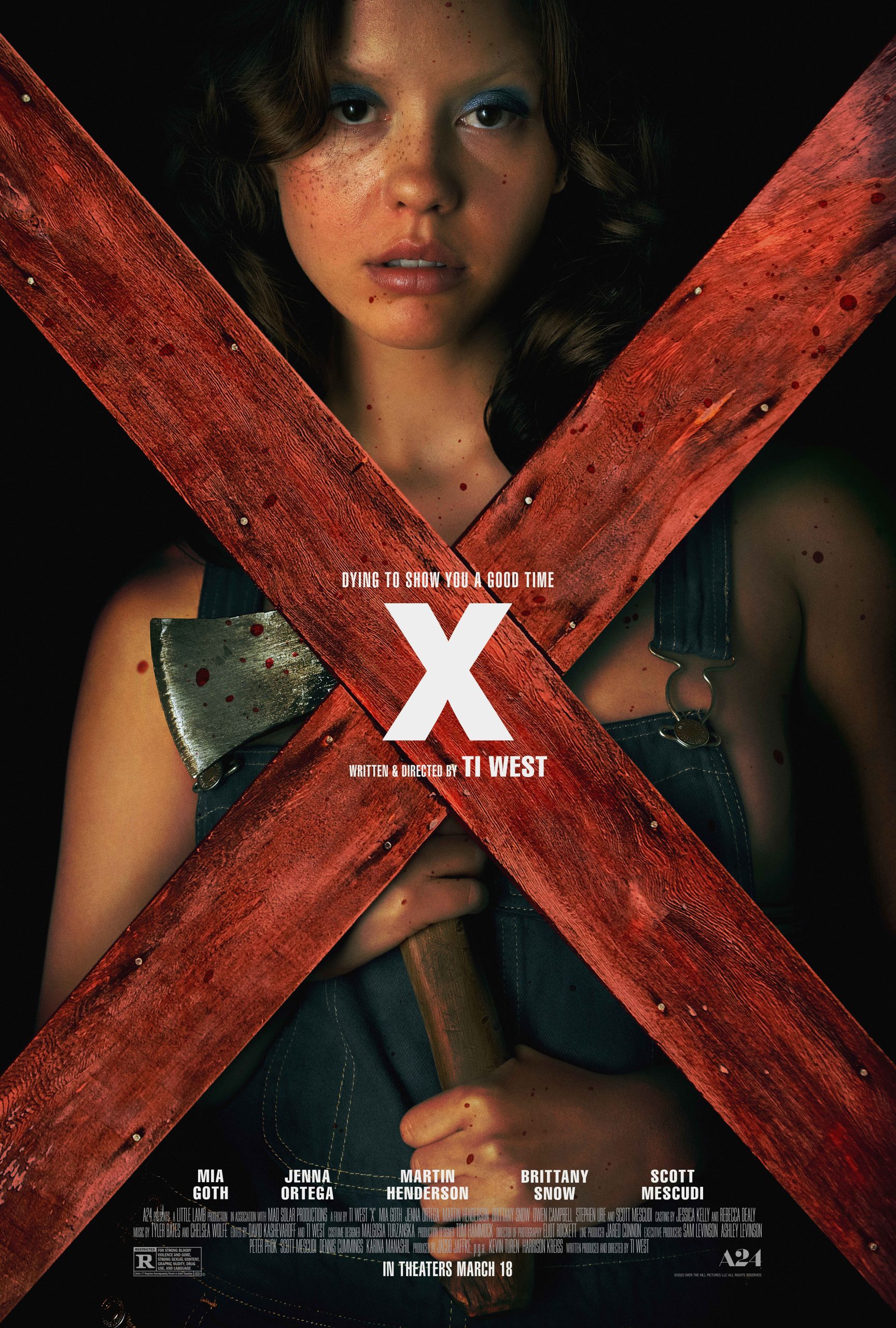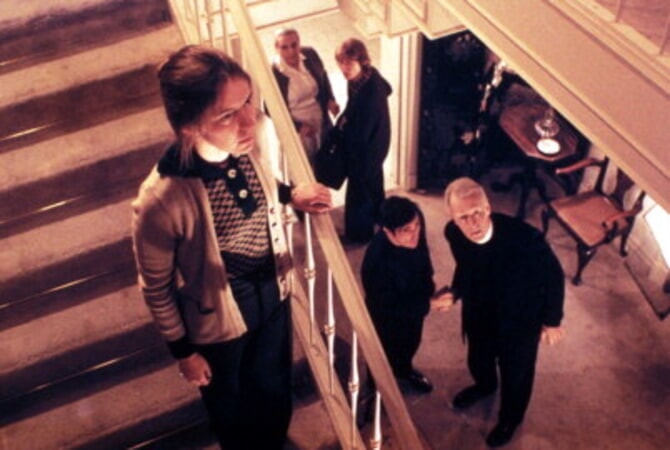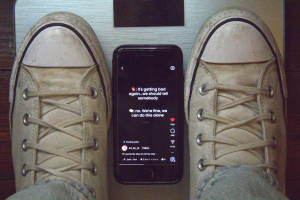The ’70s horror movies that stood the test of time and why
'70s horror movies that stood the test of time

Infamous 1970s horror movies tested fear and faith on screen. The Texas Chainsaw Massacre, Carrie and The Exorcist are heralded as some of the scariest movies ever made and have served as major influences for today’s films.
The Texas Chainsaw Massacre, directed by Tobe Hooper, takes place in rural Texas and follows five friends who stumble upon an abandoned house occupied by Leatherface, a chainsaw-wielding maniac who wears a mask of human flesh and picks the friends off one by one. The film has stunning camerawork with mesmerizing colors, especially with the bright orange flames and fear-inducing sunsets. Massacre is stitched together by masterful editing of both sound and picture. The screaming of victims is muddled by the shrieking of pigs as well as quick cuts of animal and human carcasses adorning Leatherface’s walls. The versatile and lightweight Bolex Super-16 camera movement is so grounded in realism that the viewer feels part of each scene. The final product is gritty and dusty, perfectly mimicking the hot Texas sun.
Last year, A24’s X, directed by Ti West, follows an adult film crew in the ’70s who film on a farm owned by octogenarian killers. Immediately after its release, many were drawing comparisons of this film to Massacre. Throughout the film are many visual references to the 1974 hit movie with mimicking sets and sounds. West’s film is an homage to the grind house feel of ’70s porn and horror flicks.

Brian de Palma’s Carrie, the adaptation of Stephen King’s first published novel, is a beautifully horrific character study full of memorable moments and suspense. The story follows Carrie as she struggles with both internal and external battles of torment from classmates and a religiously fanatic mother, all while harboring telekinetic powers which are pushed to their limits, resulting in a grisly ending. The film packs an emotional punch at just over an hour and a half.
All of the shots in the film have beautiful artistry to them. The dim and extremely red lighting in combination with shots of Jesus on the cross during intimate moments of womanhood all feel like paintings with larger meanings. This is especially true at the end of the film with the demise of Carrie’s mother who’s framed with religious imagery.
Quentin Tarantino says that there are only seven perfect films. One of them is William Friedkin’s The Exorcist. How is it that a film about the demonic possession of a 12-year-old girl can still be so terrifying after all these years? One reason is the horrifying makeup by Dick Smith that set out to combine gore and fear. And boy did they succeed.

The film also made advancements in cinematography for its time. To portray ultimate eeriness, most of the shots were backlit. Paired with spooky lighting were practical effects and specific camera rigs that were created specifically for certain shots. The crew even had to create a set that could go to 20 degrees below freezing to show the actor’s breath when they were in the presence of the demon. Speaking of the demon, Pazuzu, there are brief moments throughout the film where we are able to catch a glimpse of the demon in a succession of quick cuts.
This film may remain so popular with this generation because not only do the scares still hold, but also the film’s incredibly slow pace. This film also shows incredibly violent and crude imagery that, like the other films mentioned, defied a social taboo on what can be shown on screen.
Each of these films paved a new road in the horror genre in its own way, a road that contemporary filmmakers still take today to pay homage to these three films.





